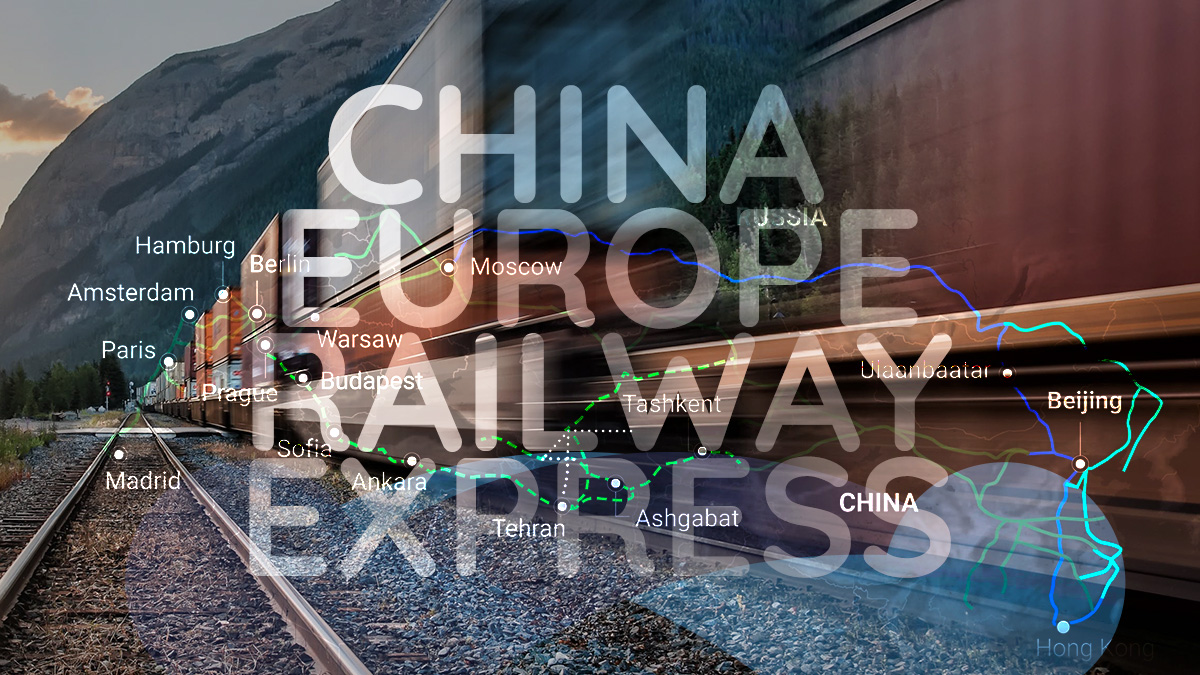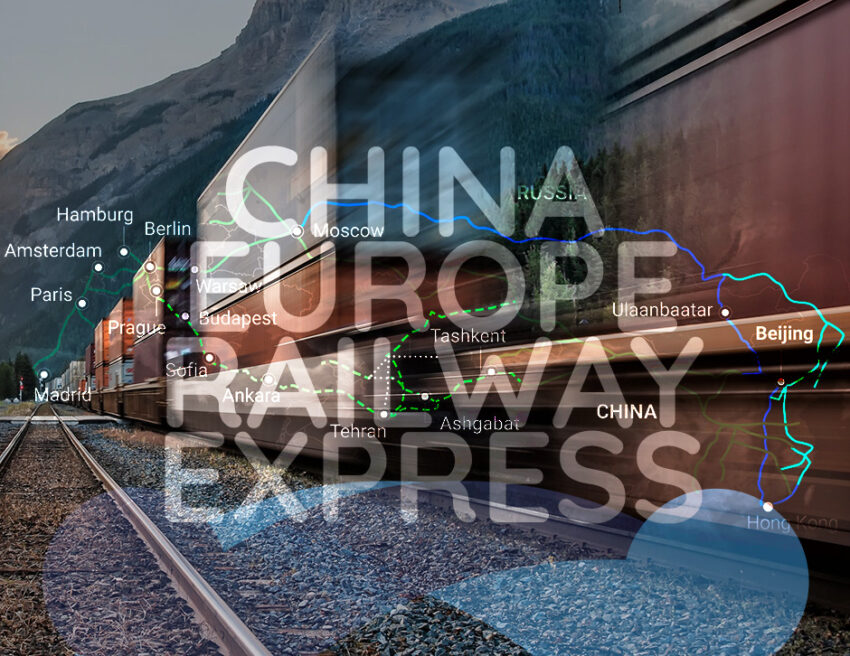The China-Europe Railway Express, also known as China Railway Express (CRE), plays a pivotal role in President Xi Jinping’s Belt and Road Initiative, serving as a crucial component in international freight forwarding. Over the past few years, this cross-continent network has emerged as a vital conduit for Chinese exports to Europe. Its significance has been particularly pronounced amid the ongoing global shipping crisis, marked by escalating costs and exacerbated port congestion. Further details about this initiatives will be explored later in the blog.
How the China Europe Railway Express is influencing the international freight forwarding sector
The China-Europe Railway Express, also known as China Railway Express (CRE), constitutes an extensive network of international multimodal container rail services connecting cities in China to their counterparts in Europe. This initiative offers overland transportation for cargo, deviating from the conventional maritime routes that traditionally link these two regions. Launched in 2013, the China-Europe Railway Express is an integral part of China’s Belt and Road initiative, and over the years, it has expanded its reach to include cities in Asia, Africa, Oceania, and Latin America. For numerous shipping companies, the China-Europe Railway Express has emerged as a more dependable alternative to sea transport. This is attributed to the CRE’s advantages in terms of speed and cost-efficiency.

How the CRE is emerging as an alternative to ocean freight shipping
Offering a viable alternative to traditional container shipping, the China-Europe Railway Express (CRE) facilitates the transportation of diverse Chinese goods. These goods, including clothing, household appliances, and car parts, are transported in containers by rail to European consumers.
Rather than following a single fixed route, the CRE operates through a network of railways that traverse both continents. Originating in China, the route spans across Central Asia and concludes in Western Europe, essentially mirroring the historical Silk Road.
The inaugural journey of the China-Europe Railway Express took place in 2011, with the first train departing from Chongqing in southwestern China and reaching the German city of Duisburg. This marked the commencement of a transformative mode of overland transportation connecting China and Europe.
The routes of the China Europe Railway Express
The China-Europe Railway Express (CRE) operates along three major corridors, each catering to specific geographical regions and facilitating the transportation of goods between China and Europe:
-
Eastern Route:
- Primarily serving Chinese exports from coastal regions, notably Yiwu in eastern Zhejiang province.
- Exits China through Manzhouli in Inner Mongolia, traverses Russia, and enters Europe via Belarus and Poland.
-
Central Route:
- Dedicated to goods produced in central China and southern coastal provinces like Guangdong, a prominent manufacturing hub.
- Enters Mongolia through Erenhot in Inner Mongolia, crosses Russia, and extends to both eastern and western Europe.
-
Western Route:
- Facilitates exports from western China, entering Kazakhstan via Alashankou or Khorgos in the Xinjiang Uygur Autonomous Region.
- Further extends into Europe, with routes often passing through Russia, Belarus, and Poland. Some trains also transit through Ukraine en route to Hungary.
These three routes collectively form a comprehensive network that reflects the diverse geographical and economic landscapes of China, ensuring efficient and tailored transportation of goods to various European destinations.
The newest developments in the China Europe Railway Express
As of its 10th anniversary in 2023, the China-Europe Railway Express (CRE) has achieved significant milestones. Over the past decade, the project has successfully operated 77,000 freight trains, transporting goods with a total value surpassing $340 billion, equivalent to 7.31 million TEUs (Twenty-foot Equivalent Units).
In a bid to enhance efficiency, five routes within the CRE now operate with trains adhering to pre-scheduled timetables, resulting in the launch of a total of 80 services. Notably, in the first half of 2023, the maximum load capacity of a single China-Europe freight train was increased from 2,500 to 3,000 tonnes. Additionally, the diversity of goods transported has also expanded, encompassing over 50,000 types, with a particular emphasis on mechanical and electrical products, vehicles, and auto parts.
Moreover, China State Railway Group Co has reported a notable 5% year-on-year increase in the number of China-Europe freight train trips, reaching 10,575 in the first eight months of 2023. These developments underscore the CRE’s growing impact on international freight forwarding and its continued contributions to facilitating trade and transportation between China and Europe.
How this rail freight route is currently stabilizing global supply chains amid security concerns in Red Sea
The short-term impact of the Red Sea crisis is notable, particularly with various shipping companies announcing the suspension of services to ports such as Haifa, Ashdod, and Jeddah, as highlighted by Zhong Zhechao. With ongoing attacks on ships along the crucial Red Sea shipping route impacting global maritime commerce, some Chinese exporters are opting for the China-Europe Railway Express services. This strategic shift is driven by the need to ensure the timely delivery of goods while avoiding the considerable operational costs associated with navigating around the Cape of Good Hope. The China-Europe Railway Express provides a viable alternative, offering a more secure and reliable transportation option for exporters amidst the challenges posed by the Red Sea shipping route.
“If the situation in the Red Sea continues, it is certain that the shift will gain momentum,” stated an official surnamed Zhang. This shift underscores the strategic value of China-Europe freight trains, offering an overland alternative to seaborne trade and enhancing the resilience of cross-continental commerce. Most importantly, in terms of efficiency, rail freight hold a clear advantage over sea transport. With a decade of high-quality development, China-European freight trains can complete the journey in about 12 days, significantly faster than the normal sea transit time of 35 to 45 days.
Furthermore, considering costs, rail freight is only marginally more expensive than sea transport, especially as the cost differential narrows after rerouting via the longer Cape of Good Hope route. Therefore, this emphasizes the attractiveness and competitiveness of the China-Europe Railway Express as a reliable and efficient mode of transportation.
The challenges ahead for the China Europe Railway Express
While passing through dozens of countries is an asset during peacetime, the China-Europe Railway Express (CRE) appears particularly fragile amid rising geopolitical tensions, especially when compared with air and ocean freight. A notable weakness lies in its efficiency, as the CRE is predominantly utilized for westbound Chinese exports, often resulting in empty trains returning to China.
The CRE has heavily relied on government subsidies for both operation and rapid expansion since its inception, as its own profitability level remains low. The issue of congestion also poses a critical problem for all routes due to strict border check procedures, a challenge that has been exacerbated since the onset of the coronavirus pandemic. The increased implementation of disease preventive measures has further intensified the congestion issue, adding to the operational challenges faced by the China-Europe Railway Express.


